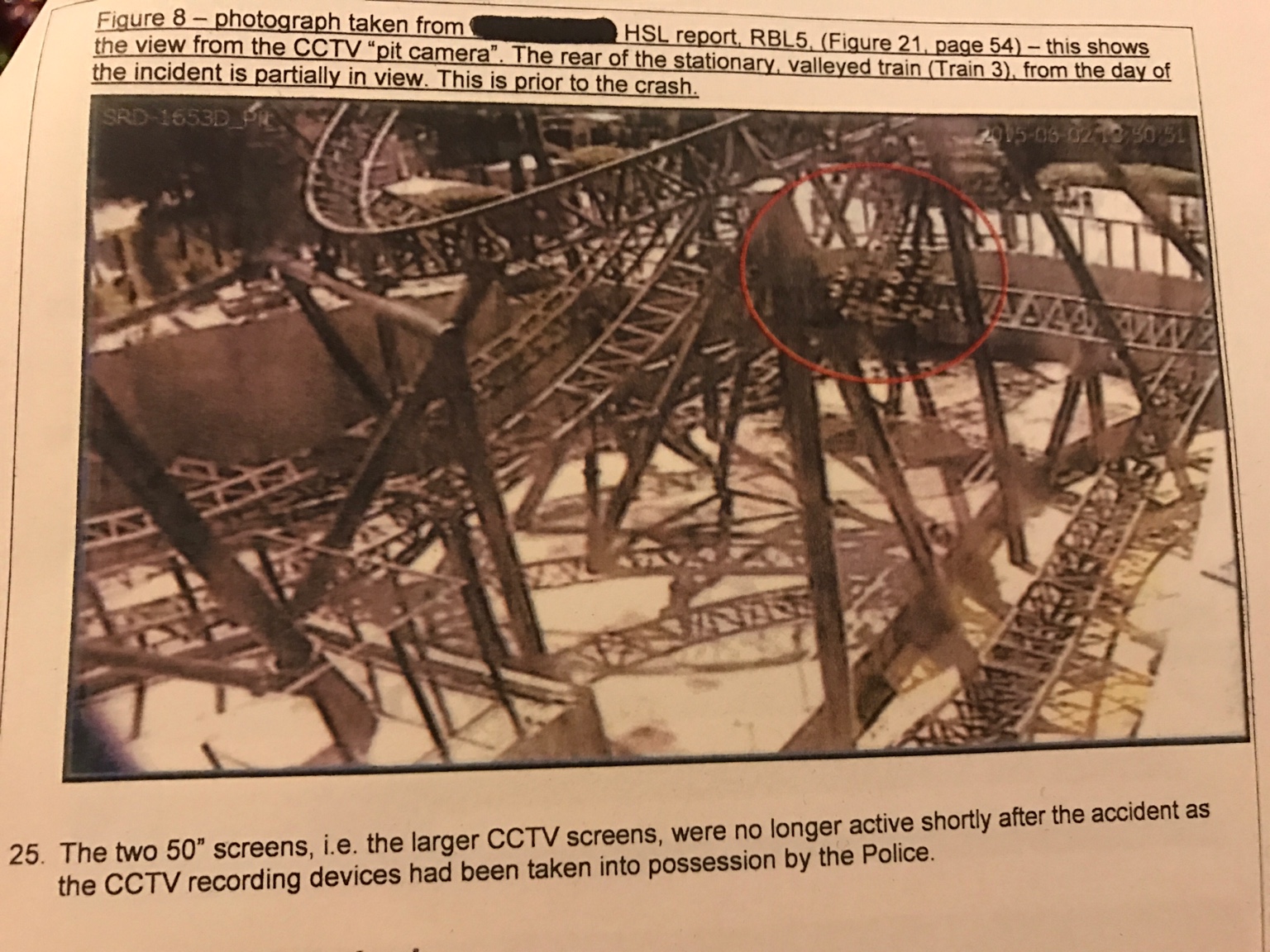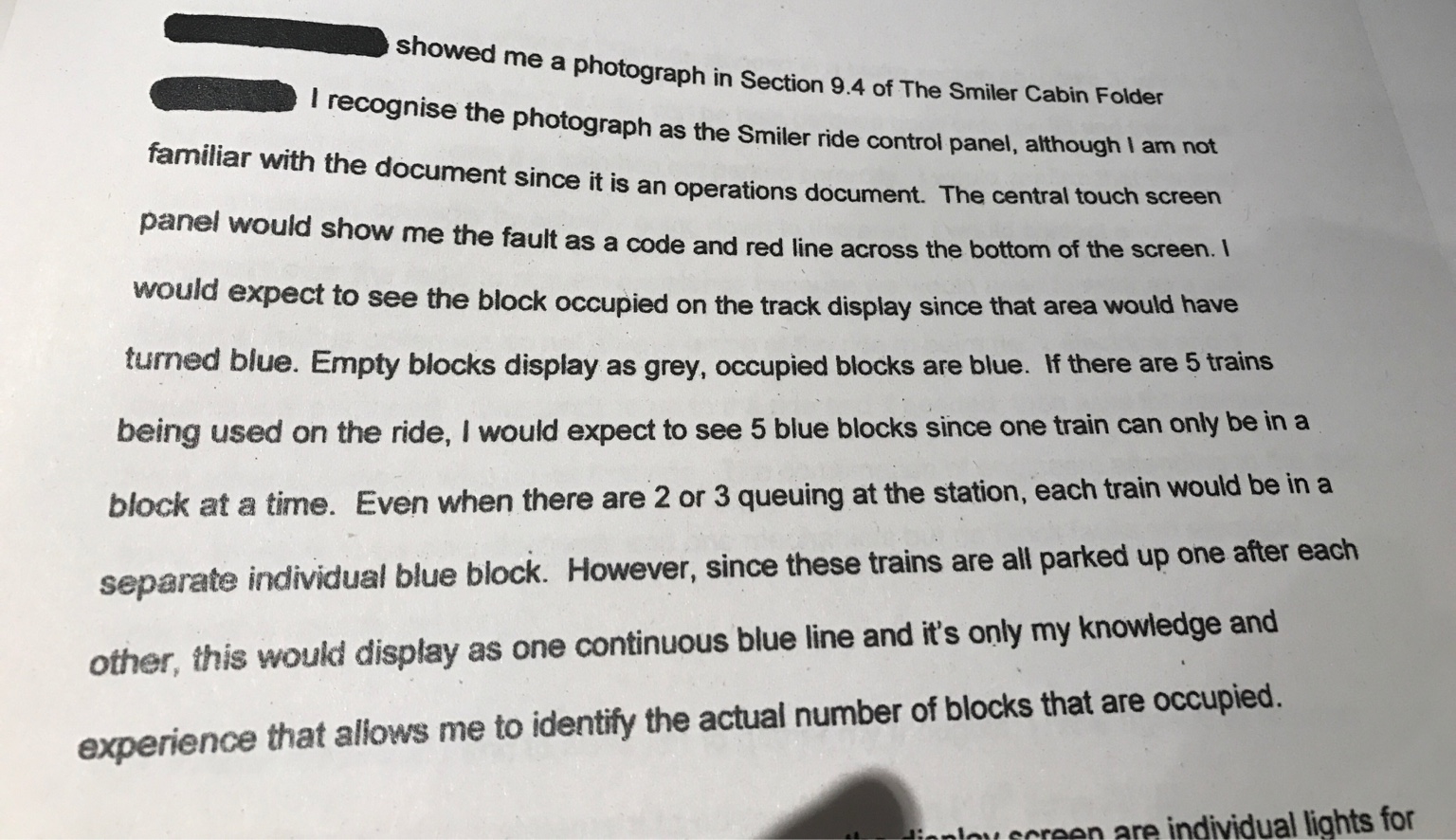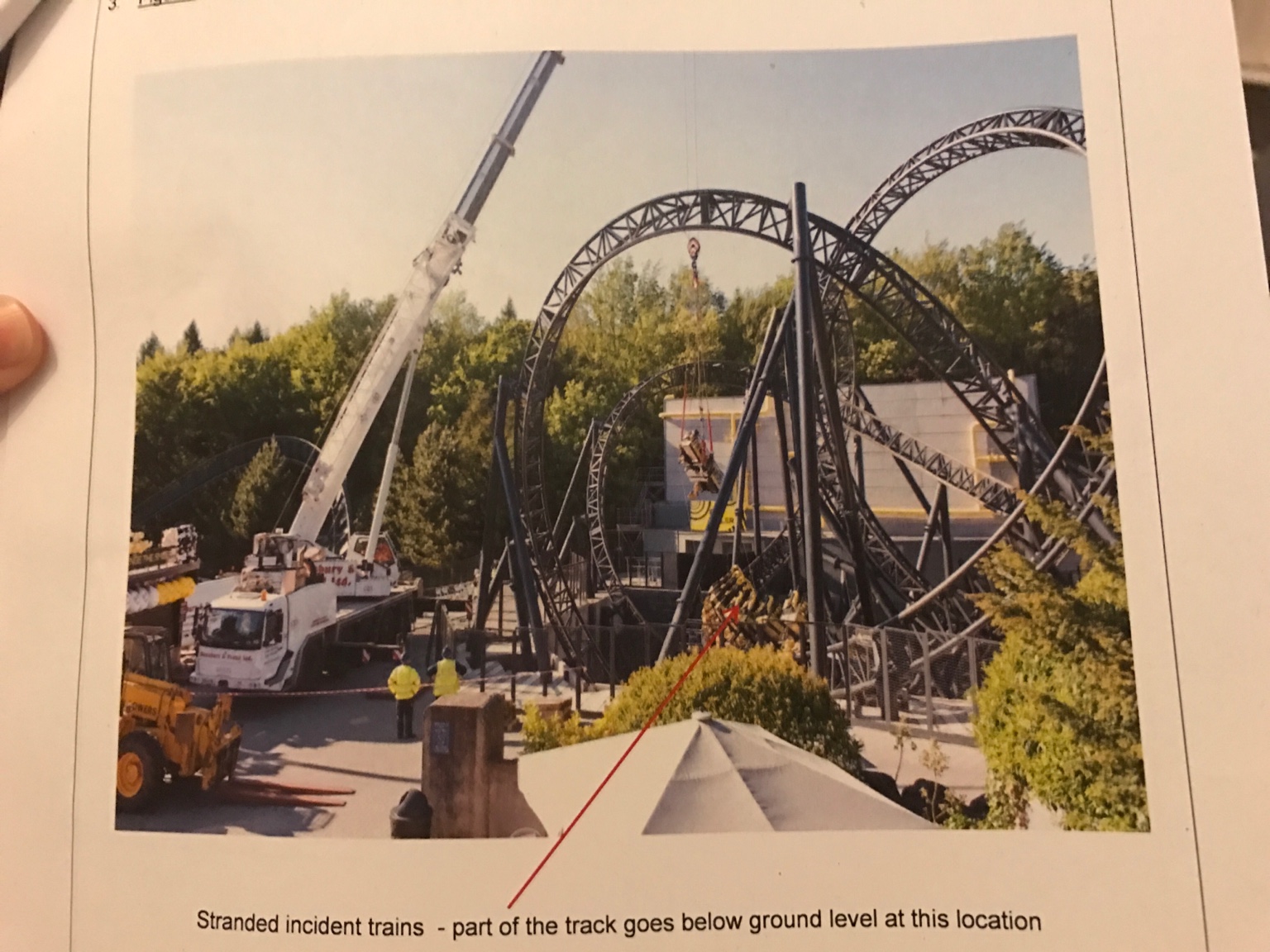punks
TS Member
How could I get my hands on a copy, Dan?I've recently submitted a Freedom Of Information request to the HSE for information on the Smiler accident. I've received some reports today. Here is some interesting facts/photos
The ride should not have operated if winds were over 34mph. Wind varied between 38mph to 46mph on the day.
The energy absorbed during the initial impact was estimated at 384kJ
CCTV was very poor. Only the back two rows could be seen.
The control panel didn't show individual train blocks in the station

Gaps in the track

Photo of the train being removed

Contains public sector information licensed under the Open Government Licence v3.0.

